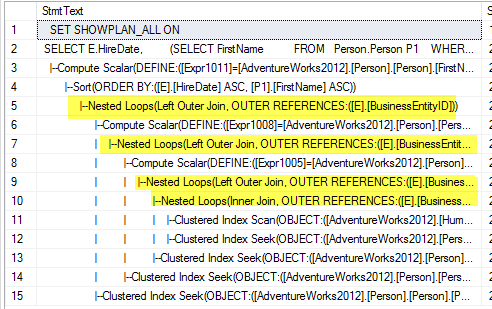

- SQLITE INNER JOIN ON SUBQUERY FULL
- SQLITE INNER JOIN ON SUBQUERY SOFTWARE
- SQLITE INNER JOIN ON SUBQUERY PLUS
Option 1Ī quick and easy option is to construct a query with the SQL GROUP BY clause: SELECT Result: +-+-+-+Īnd suppose that we want to get the lowest score for each contestant.

Suppose we have a table with the following data: SELECT * FROM Gameshow These examples work in most major RDBMSs, including MySQL, MariaDB, Oracle, PostgreSQL, SQLite, and SQL Server. pp. 1008–1019.Here are five options for using SQL to return only those rows that have the minimum value within their group. IEEE 37th International Conference on Data Engineering.
SQLITE INNER JOIN ON SUBQUERY FULL
Such a plan can be suboptimal since the transient table will not have any indexes and the outer query (which is likely a join) will be forced to do a full table scan on the transient table. When a subquery occurs in the FROM clause of a SELECT, the simplest behavior is to evaluate the subquery into a transient table, then run the outer SELECT against the transient table.
SQLITE INNER JOIN ON SUBQUERY PLUS
SQLITE INNER JOIN ON SUBQUERY SOFTWARE
A GPU acceleration approach is used to significantly improve the performance of the nested method of high algorithmic complexity by exploiting massive parallelism and device memory locality on GPU, which accomplishes the goal for both general-purpose software design and implementation and high performance in subquery processing. However, it has a high computational complexity. This simple approach has an advantage of general-purpose because it is not affected by the type of correlated operators or subquery structures. A general computational approach is to directly execute the nested loop by iterating all tuples of the correlated columns from the outer query block and executing the subquery as many times as the number of outer-loop tuples.

In addition, this approach requires high engineering efforts to implement flattening algorithms into a database engine. Because this is a customized approach, existing database systems cannot flatten arbitrary correlated subqueries by following certain general rules. The algorithm development in this direction has an advantage of low complexity. For example, in PostgreSQL, adding the keyword LATERAL before the right-hand subquery, or in Microsoft SQL Server, using the keyword CROSS APPLY or OUTER APPLY instead of JOIN achieves the effect.Ĭomputation of correlated subqueries Ī commonly used computational method for a correlated subquery is to rewrite it into an equivalent flat query (a process known as flattening ). However, in some database systems, it is allowed to use correlated subqueries while joining in the FROM clause, referencing the tables listed before the join using a specified keyword, producing a number of rows in the correlated subquery and joining it to the table on the left. Specifically, MariaDB lists this as a limitation in its documentation. It is generally meaningless to have a correlated subquery in the FROM clause because the table in the FROM clause is needed to evaluate the outer query, but the correlated subquery in the FROM clause can't be evaluated before the outer query is evaluated, causing a chicken-and-egg problem. department ) AS department_average FROM employees emp Correlated subqueries in the FROM clause SELECT employee_number, name, ( SELECT AVG ( salary ) FROM employees WHERE department = emp.


 0 kommentar(er)
0 kommentar(er)
